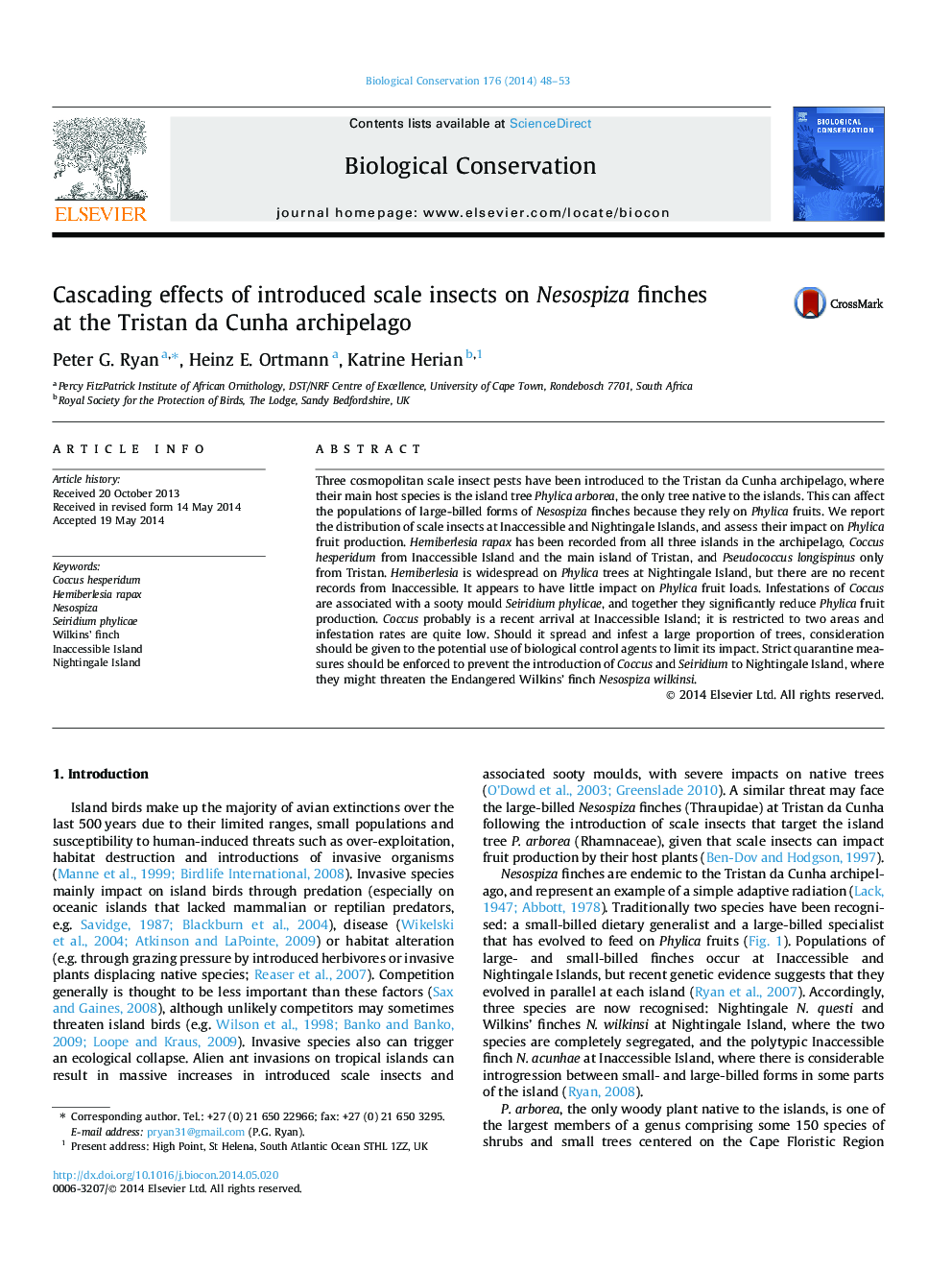| Article ID | Journal | Published Year | Pages | File Type |
|---|---|---|---|---|
| 6299452 | Biological Conservation | 2014 | 6 Pages |
Abstract
Three cosmopolitan scale insect pests have been introduced to the Tristan da Cunha archipelago, where their main host species is the island tree Phylica arborea, the only tree native to the islands. This can affect the populations of large-billed forms of Nesospiza finches because they rely on Phylica fruits. We report the distribution of scale insects at Inaccessible and Nightingale Islands, and assess their impact on Phylica fruit production. Hemiberlesia rapax has been recorded from all three islands in the archipelago, Coccus hesperidum from Inaccessible Island and the main island of Tristan, and Pseudococcus longispinus only from Tristan. Hemiberlesia is widespread on Phylica trees at Nightingale Island, but there are no recent records from Inaccessible. It appears to have little impact on Phylica fruit loads. Infestations of Coccus are associated with a sooty mould Seiridium phylicae, and together they significantly reduce Phylica fruit production. Coccus probably is a recent arrival at Inaccessible Island; it is restricted to two areas and infestation rates are quite low. Should it spread and infest a large proportion of trees, consideration should be given to the potential use of biological control agents to limit its impact. Strict quarantine measures should be enforced to prevent the introduction of Coccus and Seiridium to Nightingale Island, where they might threaten the Endangered Wilkins' finch Nesospiza wilkinsi.
Keywords
Related Topics
Life Sciences
Agricultural and Biological Sciences
Ecology, Evolution, Behavior and Systematics
Authors
Peter G. Ryan, Heinz E. Ortmann, Katrine Herian,
